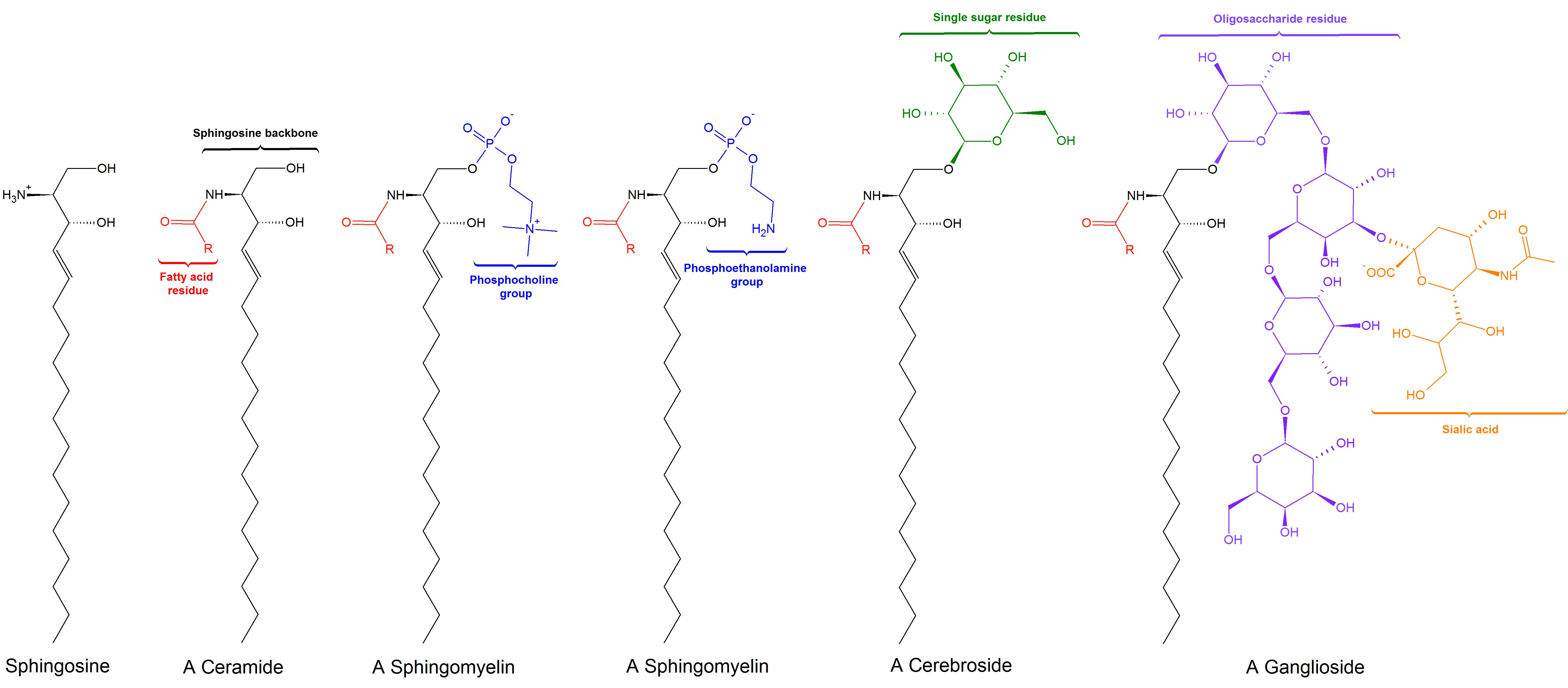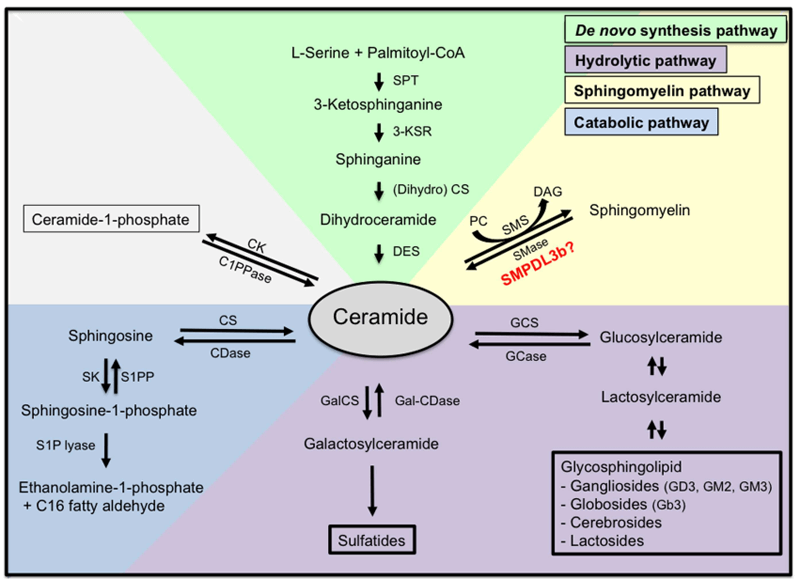Scientific progress has resulted in the discovery of novel disease biomarkers to fulfill the need for a quicker, more specific and more accurate diagnosis. Creative Biolabs is a well-recognized expert in the field of antibody generation and production. Especially, we have launched a series of in vitro diagnostic (IVD) antibody development services for different infections and diseases. Particularly, we provide IVD antibody development services against the sphingomyelin marker.
Sphingomyelin (SM) is a pivotal component of biological membranes, and it is the amplest sphingolipid in mammalian cells. The SM molecule contains two regions: a phosphorylcholine head group attached to a ceramide molecule, and a latter part which consists of a sphingosine backbone and a fatty acid (acyl chain). SM is formed by the transfer of a phosphocholine group from phosphatidylcholine to ceramide, meanwhile, yielding diacylglycerol. This process is catalyzed by SM synthase, and more than two different enzymes with SM synthase activity have been confirmed in mammals. The SM synthase 1 of human was proved to localize firstly to the trans Golgi, however, SM synthase 2 was firstly located in the plasma membrane fraction.
 Figure 1. Molecular structure of sphingomyelin. Sphingomyelin is a kind of sphingolipid discovered in animal cell membranes, particularly in the membranous myelin sheath that surrounds some nerve cell axons. It is generally composed of phosphocholine and ceramide, and a sphingosine backbone with a fatty acid. (Blake, S. 2010)
Figure 1. Molecular structure of sphingomyelin. Sphingomyelin is a kind of sphingolipid discovered in animal cell membranes, particularly in the membranous myelin sheath that surrounds some nerve cell axons. It is generally composed of phosphocholine and ceramide, and a sphingosine backbone with a fatty acid. (Blake, S. 2010)
Sphingomyelin Marker of Endometriosis
Endometriosis is a common reproductive disorder, behaved by the presence of endometrial tissue outside the uterine cavity. K. Vouk and his co-workers have demonstrated that sphingomyelins and phosphatidylcholines were potential markers of ovarian endometriosis. Their results showed that endometriosis was connected with improved levels of sphingomyelins and ether-phospholipids, which might contribute to suppression of apoptosis and influence lipid-associated signaling pathways. In addition, a report has revealed that acid sphingomyelinase (ASM) can be a negative marker for the diagnosis of ovarian cancer because they were lower expressed in ovarian cancer than that in normal cells.
Sphingolipids Marker of Metabolic Diseases
Metabolic diseases, such as type 2 diabetes and obesity, form a main emerging health crisis. Recently, sphingolipids have displayed to be potential markers of diabetes and the metabolic syndrome. They play vital roles in deciding membrane biophysical properties, topology, and integrity and in many cellular signaling processes, especially apoptosis and proliferation. It has long been identified that sphingolipid levels are unstable in the blood plasma of diabetic patients. Besides, it was revealed that sphingomyelin levels in the plasma membranes of erythrocytes positively related to circulating insulin levels in human patients. In addition, sphingolipid metabolism is extremely connected by a network of enzymes, allowing it available to learn mechanisms of sphingolipid production and signaling with high precision.
 Figure 2. Sphingolipid metabolism. Ceramide is the centerpiece of the sphingolipid metabolic pathway and can be synthesized de novo from L-serine and palmitoyl-CoA (green), through hydrolysis of sphingomyelin (yellow), or through hydrolysis of glycosphingolipids and sulfatides (purple). Ceramide can also be synthesized from sphingomyelin through the action of sphingomyelinases, or from ceramide-1-phosphate through the action of ceramide-1-phosphate phosphatase. Finally, ceramide can be further catabolized (blue) to sphingosine and sphingosine-1-phosphate, which are biologically active metabolites and finally to ethanolamine-1-phosphate and C16 fatty aldehydes. (Merscher, S. 2014)
Figure 2. Sphingolipid metabolism. Ceramide is the centerpiece of the sphingolipid metabolic pathway and can be synthesized de novo from L-serine and palmitoyl-CoA (green), through hydrolysis of sphingomyelin (yellow), or through hydrolysis of glycosphingolipids and sulfatides (purple). Ceramide can also be synthesized from sphingomyelin through the action of sphingomyelinases, or from ceramide-1-phosphate through the action of ceramide-1-phosphate phosphatase. Finally, ceramide can be further catabolized (blue) to sphingosine and sphingosine-1-phosphate, which are biologically active metabolites and finally to ethanolamine-1-phosphate and C16 fatty aldehydes. (Merscher, S. 2014)
IVD Antibody Development Services Targeting Sphingomyelin Marker
IVD antibodies have been widely used for disease screening and therapeutic monitoring. As a research partner with years of experience in high-quality antibody development and production, Creative Biolabs offers one-stop solutions from antigen design to antibody pair screening. Besides, we also offer diagnostic immunoassay development services, including feasibility analysis, assay design, assay protocol establishment, assay optimization, and kit production.
Our services can be tailor-designed to adapt to the specifications of your project. If you are interested in our services, please do not hesitate to contact us for more details.
References
For Research Use Only.
